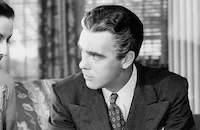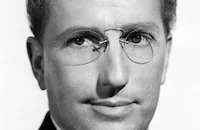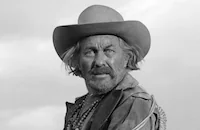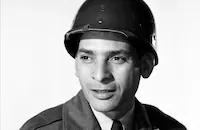Certainly the source material offered plenty of opportunity for tense action. The story is based on incidents from the war between the Modoc tribe and the U.S. Army in Oregon and California in 1872-1873. According to the opening titles, it's based on historical fact and fictional incidents and characters have been introduced only where necessary to dramatize the truth. The Modocs waged a lengthy guerrilla war against U.S. Army forces, in one battle killing General Edward Canby in April 1873. The army reinforced its troops, eventually forcing the surrender of most of the tribal warriors. Their leader, Captain Jack, was captured and executed for Canby's murder, along with three of his warriors. The rest of the tribe was either returned to the Klamath Reservation in Oregon or relocated to Oklahoma. Canby, by the way, was the only U.S. Army general killed in a war against the Indians. (George Armstrong Custer was, in fact, only a lieutenant colonel at the time of his 1876 death at Little Big Horn.)
The movie takes up the story after Canby's death, with Ladd playing an Indian fighter who has been asked by President Grant to try to bring an end to the conflict with the renegades. His efforts put him in contact with good and bad Modocs and whites alike. He also becomes involved with both a sympathetic Modoc woman and a woman of his own race, played, respectively, by Marisa Pavan and Audrey Dalton, who were each put under a three-picture contract with Jaguar. Neither, however, ever appeared with Ladd again.
Captain Jack is played with bloodthirsty relish by Charles Bronson, using that name for the first time on screen. Up to this point, he had been billed by his birth name, Charles Buchinsky.
The acclaimed look of the film is largely attributable to location shooting in Sedona, Arizona, and the nearby Coconino National Forest at a reported cost of $1.1 million. It was written and directed by Delmer Daves, who had enough of a name at this point to earn a main title reading "Delmer Daves' Drum Beat." Daves, who began as a screenwriter in the late 20s, had recently directed a fairly well-respected Western with James Stewart, Broken Arrow (1950). He went on to make the hit Westerns 3:10 to Yuma (1957) and Cowboy (1958). He later directed Ladd in The Badlanders (1958), but this was his only picture for Jaguar. He won a Western Heritage Award in 1975 for directing "outstanding Western motion pictures."
Just before production began on this picture, Alan Ladd had one of the accidents that would plague him throughout his life. He slipped in the bathtub and cracked a rib. While being treated for that, he also learned he had high blood pressure. Although his doctors warned him to take it easy, he would not delay production of the first film from his own company and refused to consider casting another actor in the role.
Screenplay: Delmer Daves
Cinematography: J. Peverell Marley
Editing: Clarence Kolster
Art Direction: Leo K. Kuter
Original Music: Victor Young
Cast: Alan Ladd (Johnny Mckay), Audrey Dalton (Nancy Meek), Marisa Pavan (Toby), Robert Keith (Bill Satterwhite), Charles Bronson (Captain Jack)
By Rob Nixon




































